In the ever-evolving world of marketing, where authenticity and trust drive engagement, employee advocacy has emerged as a powerful strategy to amplify brand messaging. Employee advocacy—the promotion of an organization by its workforce through personal networks—is not just a buzzword. It’s a cornerstone for brands aiming to build trust, boost engagement, and expand their reach in today’s digital age. As we head into 2025, it’s time to ask: Is your business tapping into its most valuable marketing asset—your employees?
The Power of Employee Advocacy in Modern Marketing
The essence of employee advocacy lies in leveraging the voices of your employees to promote your brand’s mission, products, or services. While corporate accounts are often viewed as polished and carefully curated, messages from employees tend to feel more genuine and relatable. Studies show that people are three times more likely to trust information shared by employees than by a company’s official channels.
But why is this strategy gaining traction now? The answer lies in two key trends:
- The Rise of Authenticity: In a world inundated with branded content, authenticity is the currency that builds trust. Messages shared by employees are perceived as more authentic and less “salesy.”
- The Power of Social Networks: Employees collectively have social networks that far exceed the reach of a brand’s corporate accounts. Tapping into these networks can exponentially expand your brand’s visibility.
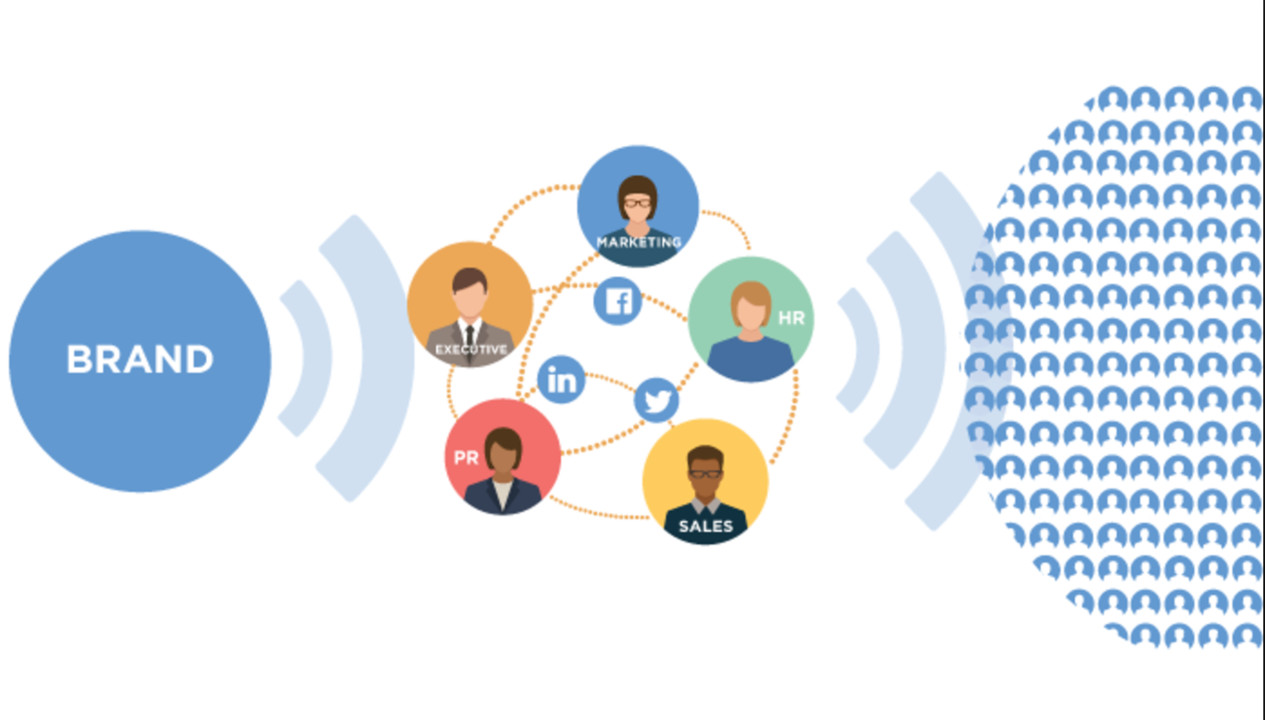
Benefits of Employee Advocacy
Implementing an employee advocacy program can have far-reaching benefits for your organization. Here are the key advantages:
1. Increased Brand Reach
Your employees’ personal networks—spanning LinkedIn, Twitter, and other platforms—can significantly amplify your brand’s visibility. A single employee sharing a post can reach hundreds or thousands of connections who may otherwise never interact with your corporate accounts.
2. Enhanced Trust and Credibility
People trust people, not logos. By empowering your employees to share their experiences and perspectives, you humanize your brand and build trust with your audience.
3. Boosted Employee Engagement
An employee advocacy program fosters a sense of ownership and pride in the organization. When employees feel valued and involved in the company’s mission, they are more likely to be engaged and motivated.
4. Improved Recruitment Efforts
Employees who share positive stories about your company can become powerful recruiters. Potential candidates are more likely to consider a company when they see authentic endorsements from current employees.
5. Cost-Effective Marketing
Compared to traditional advertising, employee advocacy offers an organic and cost-effective way to increase brand awareness and engagement.

How to Build an Employee Advocacy Program
Creating a successful employee advocacy program requires thoughtful planning and execution. Here’s a step-by-step guide:
1. Set Clear Objectives
Define what you want to achieve through employee advocacy. Are you looking to boost brand awareness, drive traffic to your website, or increase engagement on social media? Clear goals will guide your program’s strategy and measurement.
2. Choose the Right Platform
Consider using employee advocacy tools like Hootsuite Amplify or Bambu to streamline content sharing and track performance. These platforms make it easy for employees to access approved content and share it with their networks.
3. Create Shareable Content
The success of your advocacy program hinges on the quality of your content. Provide employees with engaging, shareable content that aligns with their personal interests and professional goals.
4. Provide Training and Guidelines
Offer training sessions to help employees understand the value of advocacy and how to effectively share content. Provide clear guidelines to ensure brand messaging remains consistent.
5. Incentivize Participation
Recognition and rewards can motivate employees to participate in your advocacy program. Consider offering incentives such as gift cards, extra vacation days, or public acknowledgment for top advocates.
6. Measure and Optimize
Use analytics to track the performance of your advocacy efforts. Monitor metrics such as reach, engagement, and website traffic to refine your strategy and maximize results.
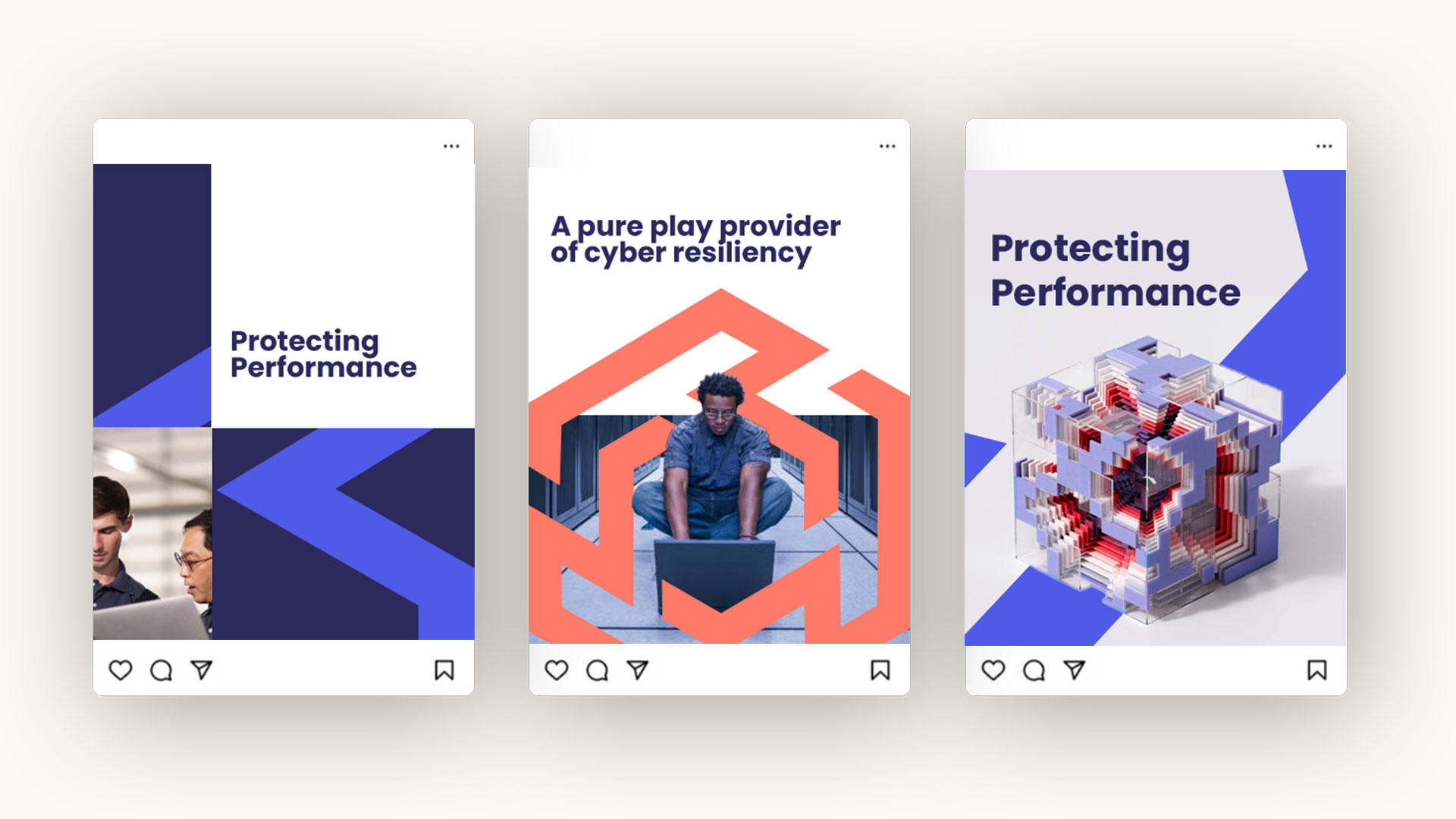
Overcoming Common Challenges
While the benefits of employee advocacy are clear, organizations may encounter challenges during implementation. Here’s how to address them:
- Low Participation Rates: Start small by engaging a core group of advocates and building momentum over time.
- Inconsistent Messaging: Provide pre-approved content and clear guidelines to ensure consistency.
- Lack of Measurement: Use analytics tools to measure performance and demonstrate the program’s ROI to stakeholders.
Why 2025 is the Year for Employee Advocacy
As digital marketing becomes increasingly competitive, brands must find innovative ways to stand out. Employee advocacy offers a unique blend of authenticity, reach, and cost-effectiveness that aligns with the needs of modern marketing. By empowering your employees to be your brand’s biggest champions, you can drive meaningful engagement and achieve your business objectives.
Take the First Step
Ready to unlock the power of employee advocacy? Contact Bluetext today to learn how we can help you build a successful program tailored to your organization’s needs. Let’s make 2025 the year your employees become your brand’s greatest advocates.
In today’s digital landscape, social media is a double-edged sword. While it offers brands a powerful platform to connect with their audience, build loyalty, and amplify their messaging, it also leaves them vulnerable to potential crises that can erupt at a moment’s notice. A single misstep or unforeseen event can spark a wave of negative sentiment, threatening to tarnish even the most reputable brands. But with the right strategic approach, brands can not only survive a social media crisis but come out stronger on the other side.
Identifying a Social Media Crisis
Not every negative comment or tweet requires a full-scale crisis response. The first step in successfully navigating a crisis is distinguishing between regular feedback and an actual crisis.
A crisis often involves:
- High volume: A sudden spike in negative comments or mentions across platforms.
- Speed of escalation: The issue spreads rapidly, gaining traction beyond the original audience.
- Virality potential: If left unaddressed, the situation threatens to go viral, reaching a broader, more public audience.
Examples include high-profile product failures, missteps in brand communication, or controversial statements. Brands like Pepsi and United Airlines, for instance, have both faced massive public backlash on social media due to tone-deaf campaigns or mishandled customer service situations. Recognizing when a crisis is looming allows brands to act quickly and mitigate damage.
Preparing for a Crisis
While it’s impossible to predict when or how a crisis will strike, preparation is the key to navigating one effectively. Building a strong crisis management foundation starts with assembling the right team. This team should include representatives from PR, customer service, legal, and social media—each bringing a unique perspective and skill set to handle various facets of the crisis.
Steps for Preparation:
- Create a Crisis Communication Plan: Outline key response protocols, designate spokespersons, and define roles and responsibilities. Ensure your team knows who will be responsible for monitoring social media, crafting responses, and handling media inquiries.
- Use Social Listening Tools: Proactive monitoring through tools like Brandwatch, Hootsuite, or Sprout Social can help you track brand sentiment and spot potential issues before they explode.
- Set Up Response Protocols: Define clear guidelines on when and how to respond. Decide what situations warrant a public statement versus a direct, private outreach. Be prepared to issue holding statements while gathering more information.
Having a structured plan in place will allow your team to act swiftly and effectively when a crisis arises.
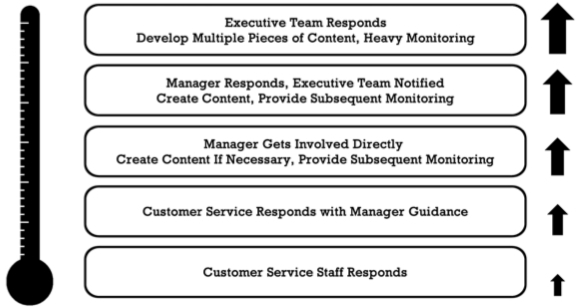
Responding to a Social Media Crisis
When a social media crisis hits, timing is everything. The first few hours are crucial in shaping how the public perceives the brand’s response. While it may be tempting to react immediately, it’s important to balance speed with care.
Here’s how to approach your response:
- Acknowledge the Issue: Silence can be perceived as negligence or indifference. Acknowledge the crisis as soon as possible, even if you don’t have all the answers yet. This shows that you are aware of the situation and are working on a resolution.
- Be Empathetic and Accountable: Demonstrate genuine concern for your audience’s feelings. Apologize when necessary and take accountability for any mistakes made. Avoid deflecting blame, as this can further damage your brand’s reputation.
- Tailor Your Message by Platform: Craft your responses in a way that fits each platform’s tone and audience. Twitter requires short, concise updates, while LinkedIn or Facebook may allow for more detailed explanations.
- Coordinate Internal Communication: Ensure that all teams, from customer service to legal, are aligned on messaging. Mixed or conflicting responses can confuse the public and worsen the crisis.
Avoid common mistakes such as arguing with individuals online or issuing insincere apologies. Always remember that public perception is shaped not only by the problem itself but by how your brand handles it.
Turning Crisis into Opportunity
Though social media crises are challenging, they also present an opportunity to demonstrate your brand’s values, transparency, and resilience. How you respond can help rebuild trust with your audience, and, in some cases, even strengthen your relationship with them.
Some strategies to leverage a crisis as an opportunity include:
- Show Transparency: Keep the public informed as you work to resolve the issue. Share updates on what’s being done to fix the problem and be open about what went wrong.
- Demonstrate Accountability: Show that you’re taking steps to address the root cause of the crisis and are making changes based on feedback. For example, after a backlash over offensive messaging, a brand might publicly commit to revisiting its marketing guidelines.
- Rebuild Trust: Once the dust has settled, highlight the improvements made. Show that your brand has learned from the crisis and is taking proactive steps to avoid similar issues in the future.
Brands like Domino’s Pizza have successfully bounced back from crises by owning up to their mistakes and making tangible changes to their business.
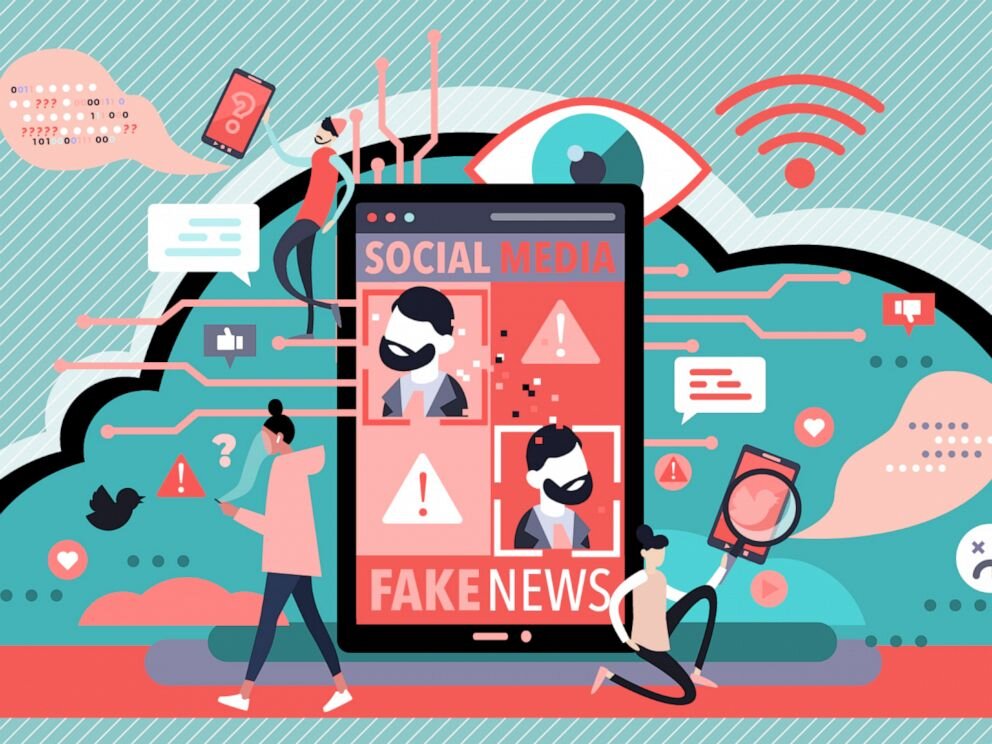
Post-Crisis Evaluation
The work doesn’t end once the crisis has passed. A post-crisis evaluation is essential to learn from the experience and prepare for future challenges. Start by analyzing the overall sentiment recovery. Did the brand manage to restore trust? How was the crisis handled internally?
Key areas to evaluate include:
- What went right, and what went wrong?: Assess the effectiveness of your communication strategy, your team’s responsiveness, and the tools you used for monitoring.
- Adjust Your Crisis Communication Plan: Based on your evaluation, make any necessary updates to your crisis communication plan to be better prepared next time.
- Ensure Long-Term Reputation Management: Continue to monitor your brand’s perception post-crisis and focus on maintaining positive engagement with your audience.
Take Control of Your Social Media Strategy
In today’s fast-paced digital world, a social media crisis can strike at any time. But with preparation, strategic communication, and a strong response plan, brands can navigate these challenges with confidence. Don’t leave your brand’s reputation to chance—partner with experts who can help you manage crises and build lasting trust with your audience.
Contact Bluetext today to ensure your brand is ready to handle any crisis with a tailored social media strategy that protects and strengthens your reputation.
Holograms have long been associated with science fiction, from the iconic scenes in Star Wars to Tony Stark’s advanced interfaces in Iron Man. But today, what was once fantasy is fast becoming a reality. Holographic technology is moving beyond entertainment and into the world of marketing, offering brands a cutting-edge way to create captivating, immersive experiences that leave a lasting impression on consumers.
In this blog, we’ll explore how brands are using holograms in visual advertising, the benefits of this futuristic medium, and where it’s headed in the near future.
The Role of Holograms in Pop Culture
Before diving into the marketing applications, it’s important to recognize how holograms have already captured the public’s imagination through pop culture. One notable example is their use in the music industry.
In 2012, the world was stunned when a hologram of the late rapper Tupac Shakur performed at the Coachella music festival. This groundbreaking performance introduced the potential of holographic technology to resurrect beloved artists in a way that felt incredibly real. The music industry continued to embrace this technology when ABBA launched their “ABBA Voyage” concerts in 2022. Using holograms of the band in their prime, the concert experience allowed fans to enjoy a futuristic show where the performers looked as they did decades ago. These examples illustrate how holograms are evolving beyond novelty to become a tool for deep emotional connections, nostalgia, and immersive experiences.
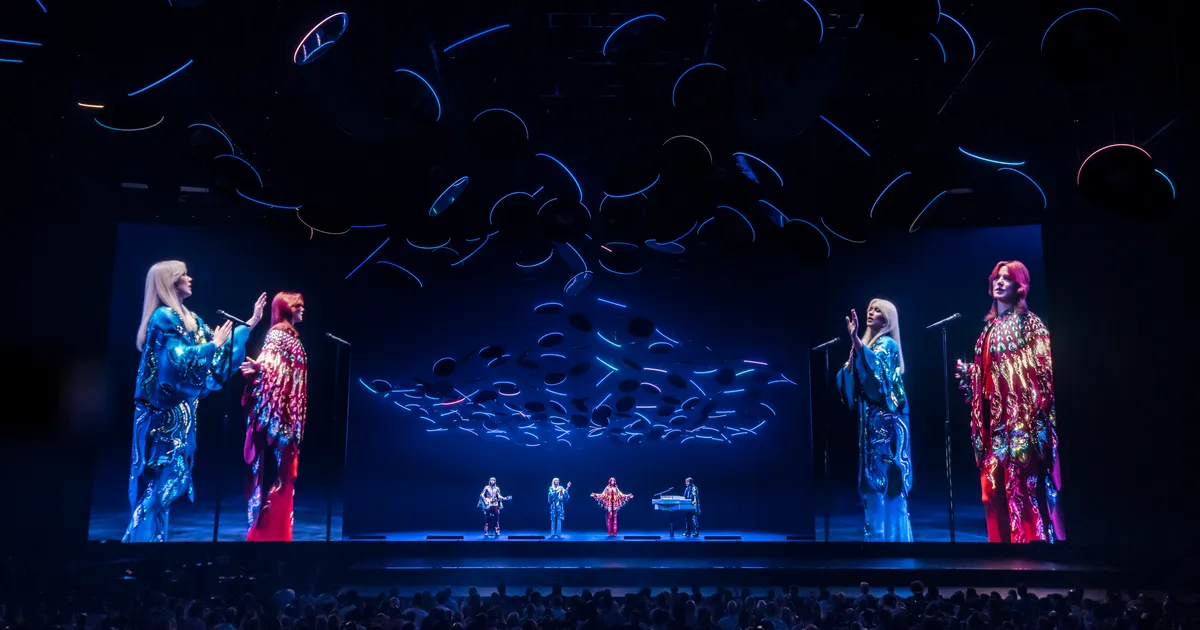
Why Holograms? The Allure of Futuristic Advertising
Holograms offer an alternative to traditional 2D advertising by creating three-dimensional images that appear to float in midair, creating a sense of wonder and intrigue. For brands, this futuristic touch not only captures attention but also resonates deeply with tech-savvy and younger audiences.
The novelty factor of holograms can elevate a brand’s message, making it stand out in crowded environments like trade shows, product launches, or even on digital platforms. A hologram that interacts with the audience or a product can transform a static ad into a dynamic, memorable experience that builds a stronger connection between the brand and consumer.
How Brands Are Using Holograms in Advertising
Brands across industries are beginning to embrace holographic technology to create stunning, interactive marketing experiences. For example:
- Nike used holograms in-store to create a floating, life-sized display of their latest sneakers, allowing shoppers to see every angle of the product without physically touching it.
- Coca-Cola utilized holographic billboards that projected 3D images of their iconic soda bottle, making it appear as though the bottle was being poured into thin air.
- Samsung has integrated holograms into their product launches, giving audiences a detailed 360-degree view of their latest phones, enhancing the product reveal.
From retail environments to public events, holograms allow brands to engage with consumers in a way that feels fresh and innovative.
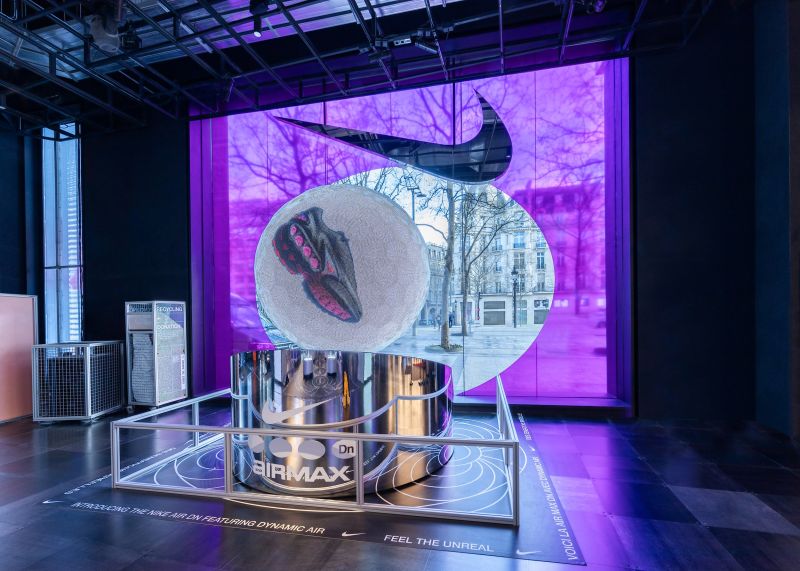
Benefits of Holographic Advertising
What makes holograms so effective as an advertising tool? Here are some key benefits:
- Immersive Experiences: Holograms offer a level of interactivity and immersion that traditional ads can’t match. They allow consumers to engage with products and branding in a 3D space, making the experience more memorable.
- Increased Engagement: The wow factor of holograms naturally attracts attention, pulling people in to interact with the content. This leads to higher engagement rates compared to static ads.
- Brand Differentiation: Holograms are still relatively new in the marketing space, which gives early adopters the chance to stand out from the competition and position themselves as innovative, forward-thinking brands.
Challenges and Considerations
While holographic technology holds immense promise, there are some challenges to consider:
- Cost: High-quality holographic displays require advanced technology and equipment, which can be expensive for some brands. However, as the technology becomes more mainstream, these costs are expected to decrease.
- Technical Barriers: Implementing holographic displays often requires specialized knowledge and equipment. Setting up large-scale holograms for events or retail spaces can be technically complex.
- Environmental Limitations: While holograms thrive in controlled indoor settings, outdoor use can pose challenges due to light interference or environmental conditions.
The Future of Holographic Advertising
As technology continues to advance, holographic advertising is likely to become even more widespread. The next 5-10 years could see holograms integrated with augmented reality (AR) and virtual reality (VR), creating even more immersive and interactive experiences. We may also see holographic displays becoming more affordable, allowing small and mid-sized businesses to adopt this technology for their marketing strategies.
Additionally, the potential for real-time customization is another exciting development. Imagine a future where brands can update their holographic ads on the fly, tailoring messages to specific audiences or locations with ease.
Ready to Bring Your Brand to Life with Holograms?
Holograms represent the next frontier in visual advertising, offering brands a unique opportunity to captivate and engage audiences with futuristic, immersive experiences. Whether through retail displays, product launches, or interactive billboards, holographic technology is quickly moving from sci-fi to reality, giving brands a powerful tool to create unforgettable moments. As the technology continues to evolve, the possibilities for holographic marketing are endless, paving the way for a new era of advertising innovation.
At Bluetext, we specialize in helping brands leverage the latest technologies to create unforgettable marketing experiences. Whether you’re looking to integrate holograms into your next campaign or explore other innovative advertising solutions, our team of experts is here to guide you every step of the way.
As businesses expand their reach into international markets, they are often met with a set of unique challenges. What works for a domestic audience might not resonate, or could even offend, in another part of the world. Global marketing campaigns require an extra layer of sophistication, blending cultural awareness, regulatory compliance, and technical precision. By navigating these complexities carefully, brands can create successful international marketing strategies that truly connect with global audiences.
Understanding Cultural Sensitivity
Cultural differences are perhaps the most prominent hurdle in global marketing. What may seem like an engaging or humorous campaign in one country can easily misfire in another due to cultural norms, values, or even taboos. Cultural sensitivity is key to avoiding these pitfalls.
For instance, consider Pepsi’s 1990s campaign in Taiwan, where their slogan “Pepsi brings you back to life” was mistranslated to imply resurrection—a message that didn’t sit well with local beliefs. To prevent such missteps, it’s critical to conduct thorough cultural research, understanding not only language but symbolism, gestures, and traditions that may influence how your message is received.
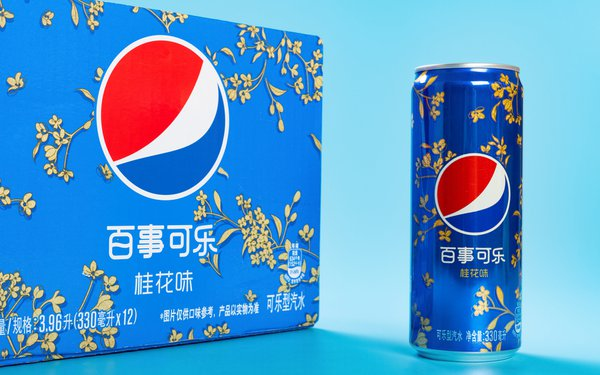
When creating global campaigns, brands should consider developing region-specific strategies that align with local traditions, lifestyles, and media preferences. This approach ensures that the campaign resonates and avoids crossing cultural boundaries.
Language and Localization
While translation is a necessary component of global marketing, localization takes it a step further. True localization involves adapting content not only in language but also in tone, context, and imagery to reflect local values. It’s not just about saying the right words but saying them in a way that connects with the audience.
For example, a brand slogan that relies on humor or slang in English may need to be rewritten to capture the same sentiment in another language. The lack of proper localization can lead to confusing or even offensive messaging, as was the case when KFC’s famous “Finger Lickin’ Good” slogan was translated to “Eat your fingers off” in China. Understanding colloquialisms and cultural references is crucial for successful localization.
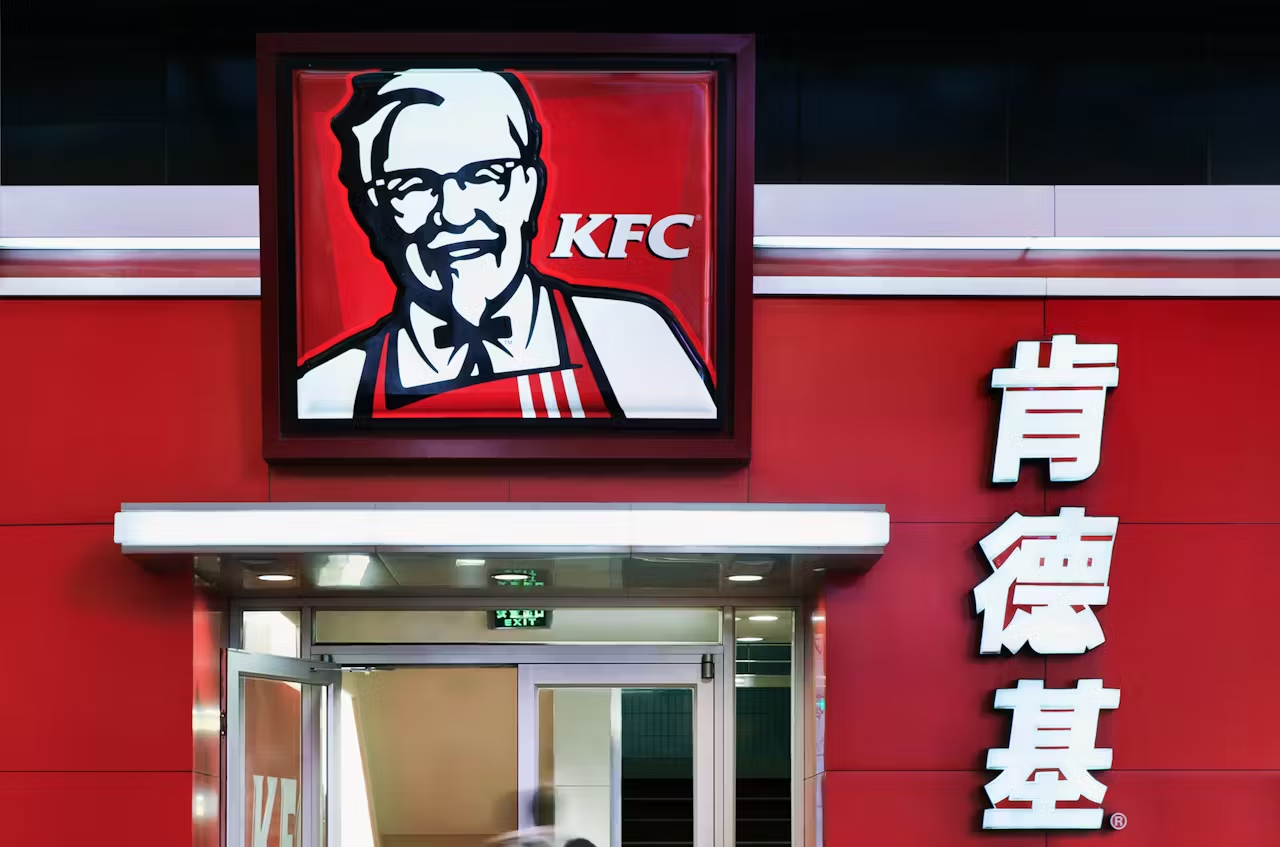
A best practice for global marketers is to work with local linguists, copywriters, and cultural consultants to ensure content not only makes sense but aligns with local preferences. Investing in a truly localized strategy can increase the effectiveness of your campaign across borders.
Navigating Regulatory Differences
One of the more complex challenges of international marketing is adhering to the varying regulations that govern advertising across regions. From data privacy laws like GDPR in Europe to different advertising standards in places like China or the Middle East, these regulations can have significant implications on how campaigns are run.
For example, the European Union’s GDPR limits how customer data can be collected and used for marketing purposes. If a campaign violates these standards, it could result in hefty fines and reputational damage. Similarly, advertising guidelines in countries like Japan or Germany may be far stricter than those in the United States, especially when it comes to claims around product benefits or competitive messaging.
To effectively navigate these challenges, global marketing teams must stay up-to-date with legal standards in each target market. Working with local legal experts or compliance officers can help ensure that campaigns are both compliant and effective.
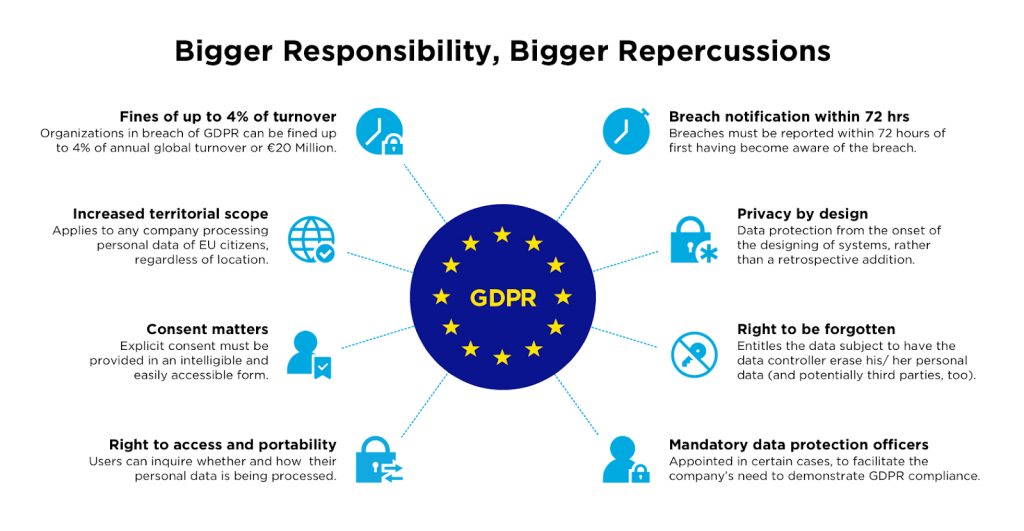
Overcoming Technical and Logistical Challenges
Beyond the cultural and regulatory complexities, there are technical and logistical barriers to global marketing campaigns. These include time zone differences, the availability of digital infrastructure, and the dominant social media platforms in each region.
For instance, while Facebook may dominate in the United States, WeChat is the primary platform in China, and WhatsApp has a strong presence in parts of Europe and Latin America. Ensuring that your campaign aligns with the preferred digital platforms in each market is critical to its success.
Additionally, managing global teams across time zones can present challenges in coordination and execution. Establishing a centralized strategy with local execution teams can help maintain consistency while allowing flexibility for localized adaptations. Communication tools like Slack, Trello, or project management platforms can bridge the gap between distributed teams, ensuring smooth coordination.
Measuring Success Across Markets
Once your campaign is live, it’s essential to measure success and refine your approach. However, measuring success in a global campaign comes with its own set of challenges. The KPIs that matter in one market may not carry the same weight in another. For example, while click-through rates may be a primary indicator of success in North America, customer engagement through chatbots or mobile apps might be more important in parts of Asia.
Using a combination of global and local performance metrics is key to understanding the full impact of your campaign. Tools like Google Analytics, HubSpot, or SEMrush allow you to track region-specific results, providing insights into what works and what needs adjustment. This iterative approach helps global campaigns evolve based on real-time data.
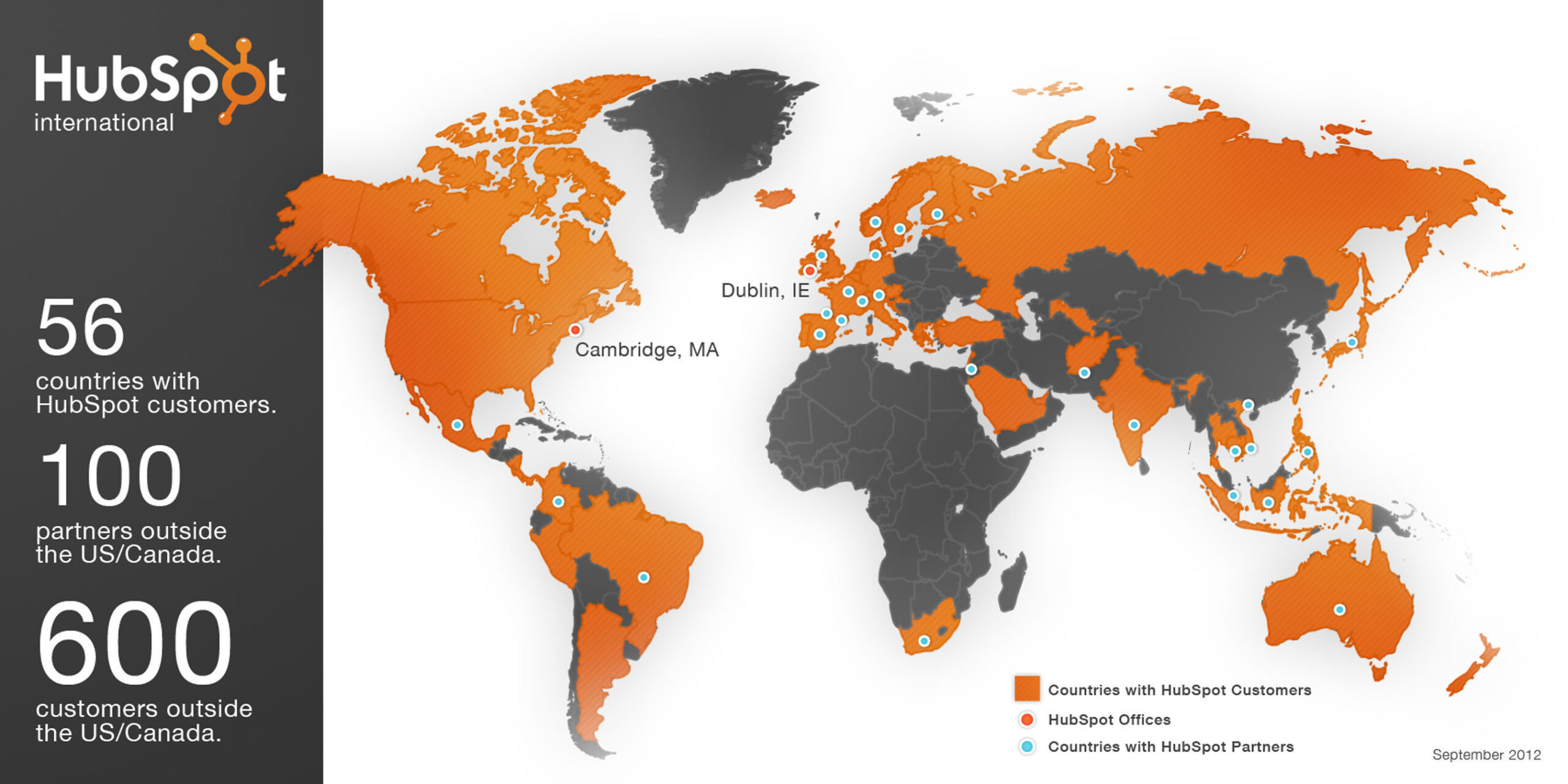
Partner with Experts for Global Success
Navigating the complexities of global marketing campaigns requires careful planning, local insights, and a flexible approach. From cultural sensitivity to regulatory compliance, the success of an international campaign depends on understanding the nuances of each market.
Partnering with Bluetext ensures that your global marketing strategy is in the hands of experts who know how to navigate these challenges. With our proven track record of executing campaigns across multiple regions, we can help you create a tailored global marketing approach that resonates with diverse audiences and drives results. Contact us today.
When most people think of Halloween, images of pumpkins, spooky costumes, and haunted houses come to mind. But beyond trick-or-treating and ghost stories, Halloween offers a unique opportunity for businesses—especially B2B brands—to inject some creative flair into their branding efforts. While holidays like Halloween are often associated with B2C marketing, B2B companies can take advantage of the seasonal excitement to engage clients, refresh their brand image, and stand out in competitive markets.
In this post, we’ll explore how B2B brands can embrace the spooky spirit to reinvent their branding, from visual elements to clever campaigns. Let’s dive into the ways Halloween can offer both a temporary and lasting boost to your company’s image.
1. Leveraging Halloween for Seasonal Campaigns
Themed campaigns tied to specific holidays can be an effective way to create buzz and engage your audience. Halloween, with its playful, fun atmosphere, is the perfect backdrop for creativity. By leaning into the festive spirit, B2B companies can use Halloween as an opportunity to showcase a different side of their brand, one that’s more approachable, memorable, and human.
Consider running a limited-time promotion or launching a Halloween-themed product campaign. For example, a cybersecurity company could promote a “hauntingly good” offer on their services, while a SaaS provider might roll out a themed demo or tutorial to highlight “scary” data risks and how their product can help.
Seasonal campaigns give brands a chance to engage customers in a way that feels timely and relevant, boosting visibility and generating excitement.
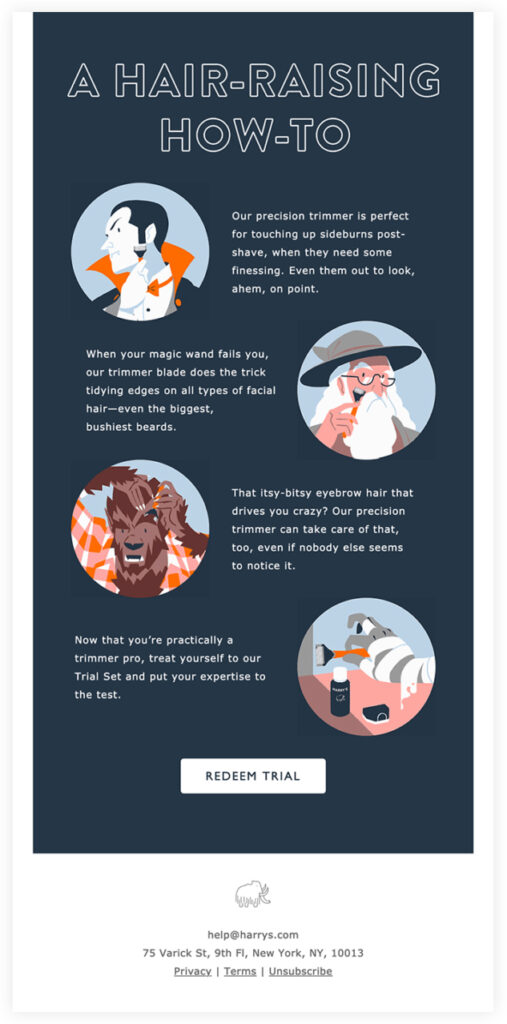
2. Spooky Visuals & Branding Elements
Halloween is all about striking visuals—think eerie shadows, bold colors, and playful characters. B2B brands can temporarily refresh their image by incorporating Halloween-themed elements into their logos, websites, or social media channels. A temporary logo redesign featuring bats, pumpkins, or a spooky color palette can add a touch of fun to your brand without compromising professionalism.
Playful visuals also attract attention in crowded digital spaces, encouraging users to stop and engage with your brand. Adding subtle Halloween elements to your website banners, social posts, or email campaigns can help create a cohesive, festive feel.
At Bluetext, we work with brands to ensure that their seasonal visuals remain true to their overall identity while capturing the spirit of the occasion. Done right, spooky visuals can not only engage your audience during Halloween but also position your brand as creative and adaptable long-term.
3. Spooky Copywriting & Themed Messaging
Words matter, especially when they come with a twist of spooky fun. Halloween-themed copy can help your messaging stand out in an otherwise dry B2B environment. Think about using clever, eerie puns or references in your marketing materials—whether it’s a tagline like “Don’t let your data ghosts haunt you!” or email subject lines like “A Frighteningly Good Offer Awaits.”
Spooky messaging can also humanize your brand by allowing a lighter, more playful tone. Just remember to balance the festive fun with your overall brand voice, ensuring you maintain credibility while having fun with your audience.
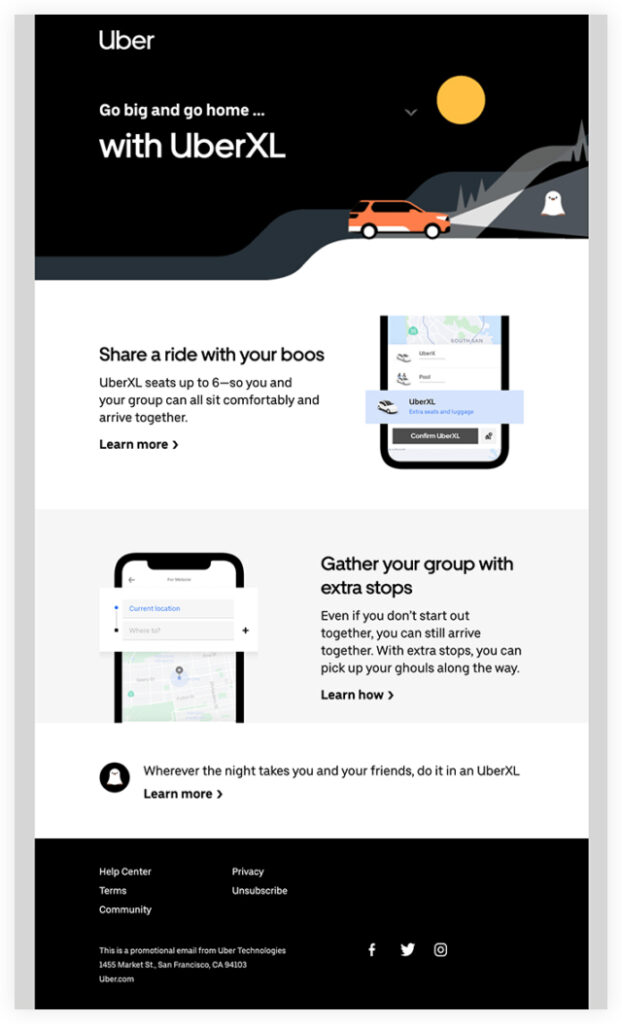
4. Halloween as a Gateway to a Brand Refresh
What starts as a seasonal campaign can sometimes inspire larger, more permanent shifts in your brand’s identity. By experimenting with Halloween-themed visuals, messaging, and promotions, you may discover new ideas that resonate with your audience and can be carried forward into your long-term strategy.
For example, the introduction of a temporary mascot for a Halloween campaign could evolve into a recurring brand ambassador that reappears in future seasons. Or, the more playful tone used in Halloween messaging might inspire your team to adopt a friendlier, more conversational approach to your year-round communications.
Seasonal branding efforts can be a great testing ground for ideas that may eventually lead to a full-scale brand refresh. At Bluetext, we work with clients to explore these opportunities, leveraging seasonal campaigns to inform bigger shifts in brand strategy.
5. Examples of Successful Halloween Campaigns in B2B
Halloween-themed campaigns aren’t just for consumer-facing brands. In fact, many B2B companies have successfully embraced the holiday to make a lasting impression.
For example, an enterprise software company might run a Halloween-themed webinar, marketing it as “Scary Good Tips to Save Time with Automation.” A financial services firm could host a “Fright-Free Finance” event, focusing on demystifying complex financial topics with a seasonal twist. Even something as simple as incorporating spooky language into social media posts or launching a limited-time offer on services can help B2B brands join the Halloween fun.
By embracing these creative ideas, brands can increase engagement, foster stronger connections with their audience, and leave a lasting impression that extends beyond the holiday itself.
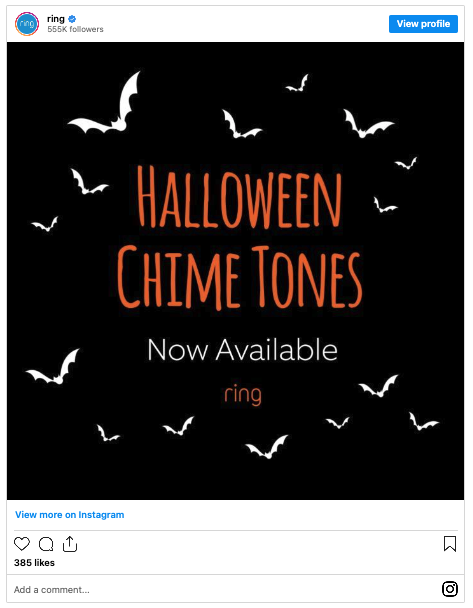
Unleash the Spooky Potential of Your Brand
Halloween offers more than just costumes and candy; it’s an opportunity for B2B brands to get creative and refresh their image. From spooky visuals and clever copy to themed campaigns that build buzz, Halloween can be the perfect catalyst for both short-term engagement and long-term brand innovation.
At Bluetext, we specialize in helping brands tap into seasonal opportunities to create lasting impact. Ready to put your own spooky spin on your brand this Halloween? Contact us today to start planning a campaign that will haunt your audience—in all the right ways.
Launching a new product is an exciting, but often challenging endeavor. Whether you’re expanding into a new market or introducing an innovative solution, success hinges on a well-crafted go-to-market (GTM) strategy. Without the right approach, even the most groundbreaking products can struggle to gain traction. In this post, we’ll break down the key components of a successful GTM strategy and provide actionable insights to ensure your product hits the ground running.
1. Conduct Thorough Market Research & Competitive Analysis
Before launching any product, it’s critical to understand the landscape in which you’re operating. Market research should reveal customer pain points, trends, and opportunities while competitive analysis uncovers where your product can stand out.
Start by identifying:
- Customer needs: What problems does your product solve?
- Market trends: What external factors could influence demand, such as technological shifts or regulatory changes?
- Competitor positioning: Where do competitors excel, and where are the gaps you can fill?
Surveys, industry reports, customer feedback, and tools like Google Trends can be invaluable in this phase. By gathering robust insights, you can fine-tune your product’s features and positioning to meet market demand.
At Bluetext, we guide clients through detailed research processes, providing data-driven insights to inform every stage of the product launch. Our experience helps ensure that your GTM strategy is rooted in a deep understanding of the market and your competition.
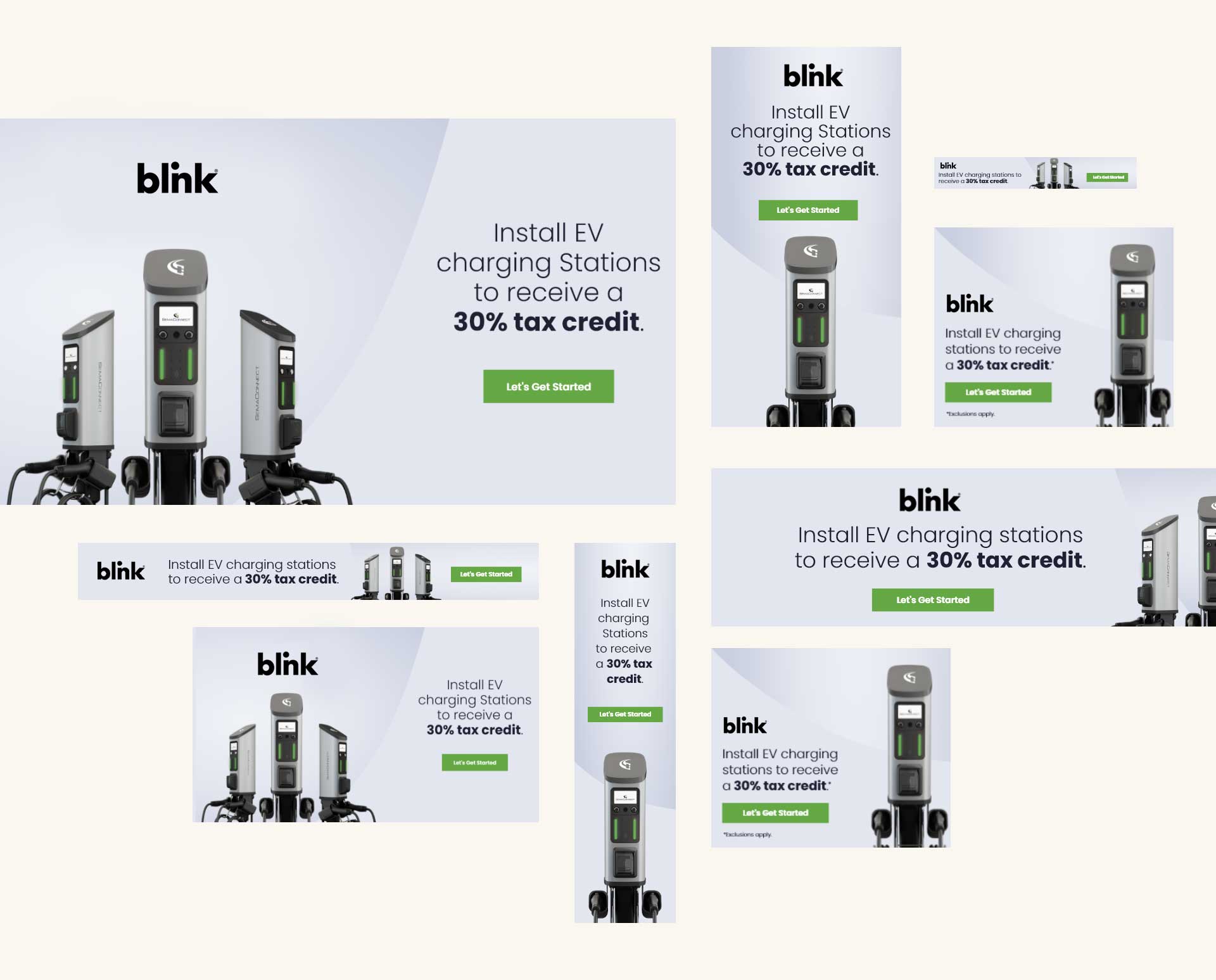
2. Define Your Target Audience & Craft Messaging
Identifying your target audience is crucial to a successful launch. The better you understand your customers, the more effectively you can speak to their needs. This starts with developing detailed buyer personas that include demographic, psychographic, and behavioral characteristics.
Once you know your audience, craft messaging that resonates with their specific pain points and desires. Focus on creating a narrative that communicates your product’s unique value in a way that speaks directly to your target market.
3. Establish a Clear Product Positioning & Value Proposition
Your product’s value proposition is the foundation of your GTM strategy. It should clearly articulate why your product is better than alternatives in the market and how it meets the needs of your target audience.
A strong value proposition:
- Addresses specific customer pain points.
- Highlights key benefits that differentiate your product from the competition.
- Speaks to the outcomes or results customers can expect.
Bluetext works closely with clients to develop compelling value propositions and positioning strategies that ensure products are set for maximum impact from day one.
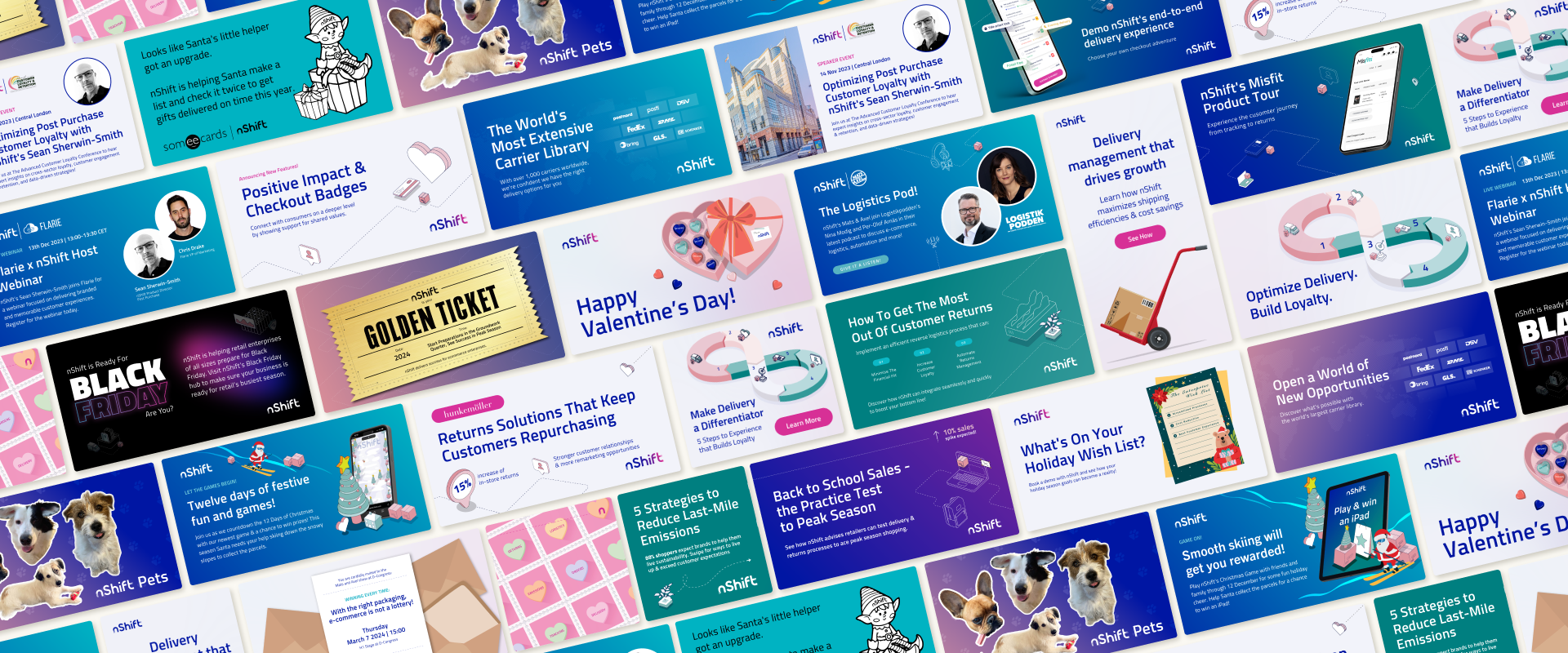
4. Align Sales Enablement & Channel Strategy
Sales teams are the frontline advocates for your product, so it’s critical to provide them with the tools they need to sell effectively. This includes:
- Sales collateral: Product brochures, pitch decks, and case studies that emphasize product benefits.
- Training: Regular training sessions to keep sales teams informed on key product features and messaging.
- CRM tools: Ensure your team has the right tools to track and manage customer relationships.
Additionally, consider your distribution channels. Will you rely on direct sales, resellers, or strategic partnerships to bring your product to market? Defining this early will ensure your product reaches the widest possible audience.
Bluetext has helped numerous clients refine their channel strategies, resulting in stronger partnerships and more effective sales efforts.
5. Execute a Comprehensive Promotional Tactics & Launch Plan
Your product launch is your opportunity to create buzz and generate excitement. A strong launch plan will include:
- Pre-launch activities: Build anticipation through teasers, beta testing, and influencer outreach.
- Launch day: Use a mix of PR, digital advertising, and social media campaigns to ensure maximum visibility.
- Post-launch engagement: Continue the momentum with follow-up campaigns, customer testimonials, and product demos.
Bluetext has executed numerous successful launch campaigns, leveraging a variety of promotional tactics tailored to each client’s audience and industry. From targeted digital ads to influencer partnerships, we ensure your launch garners the attention it deserves.
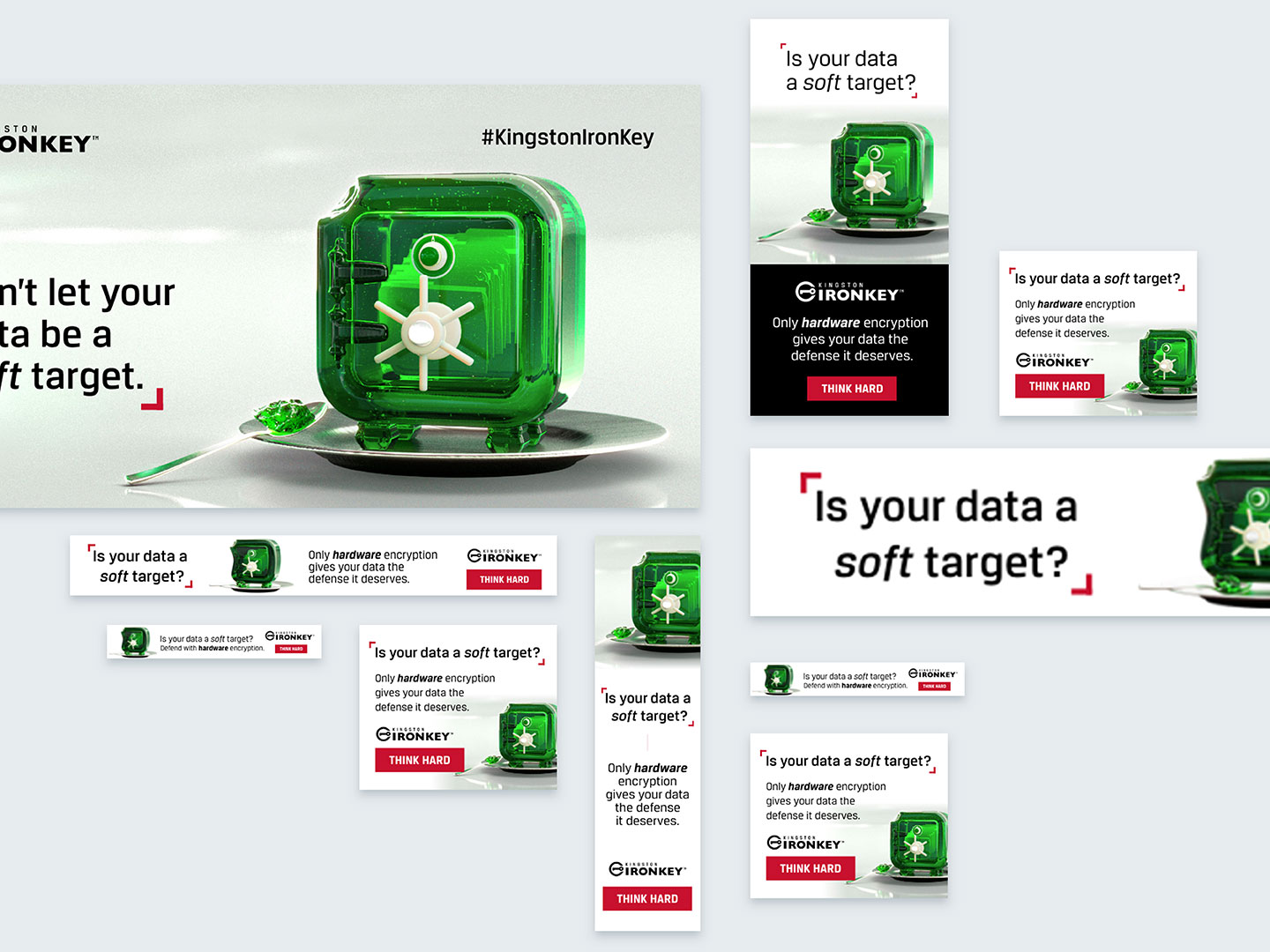
6. Measure Success & Optimize
Once your product is in the market, it’s important to track its performance and adjust your strategy as needed. Key performance indicators (KPIs) to monitor include:
- Sales figures: Are you meeting your sales targets?
- Market penetration: How well is your product performing against competitors?
- Customer acquisition: Are you attracting your target audience effectively?
With Bluetext’s data-driven approach, we help clients not only track success but also refine their strategies based on performance. Regular analysis and optimization can make the difference between a product that performs well and one that dominates the market.
Setting Your Product Up for Long-Term Success
Launching a new product is no small feat, but with the right GTM strategy, you can significantly increase your chances of success. From market research to promotional tactics, each step of the process should be carefully planned and executed to ensure maximum impact.
At Bluetext, we specialize in creating tailored go-to-market strategies that deliver results. Ready to launch your next product with confidence? Contact us today to see how we can help.
For SaaS companies, content marketing is more than a buzzword—it’s a core driver of user acquisition, engagement, and retention. At Bluetext, we’ve worked with leading SaaS brands to build strategic content marketing campaigns that not only attract users but keep them engaged long-term. In this post, we’ll share advanced tactics to help your SaaS company build high-performance content campaigns that drive product adoption and increase retention.
The Unique Challenges of SaaS Content Marketing
Unlike traditional products, SaaS offerings live in a fast-evolving digital environment where product updates are frequent, user education is critical, and retention is key to growth. For this reason, your content marketing must do more than just capture attention—it needs to nurture users, demonstrate ongoing value, and reduce churn.
At Bluetext, we understand that SaaS marketing requires a customer-first approach that meets users at every stage of their journey. From initial awareness to retention strategies, your content should deliver value, solve pain points, and provide the information users need to succeed with your product.
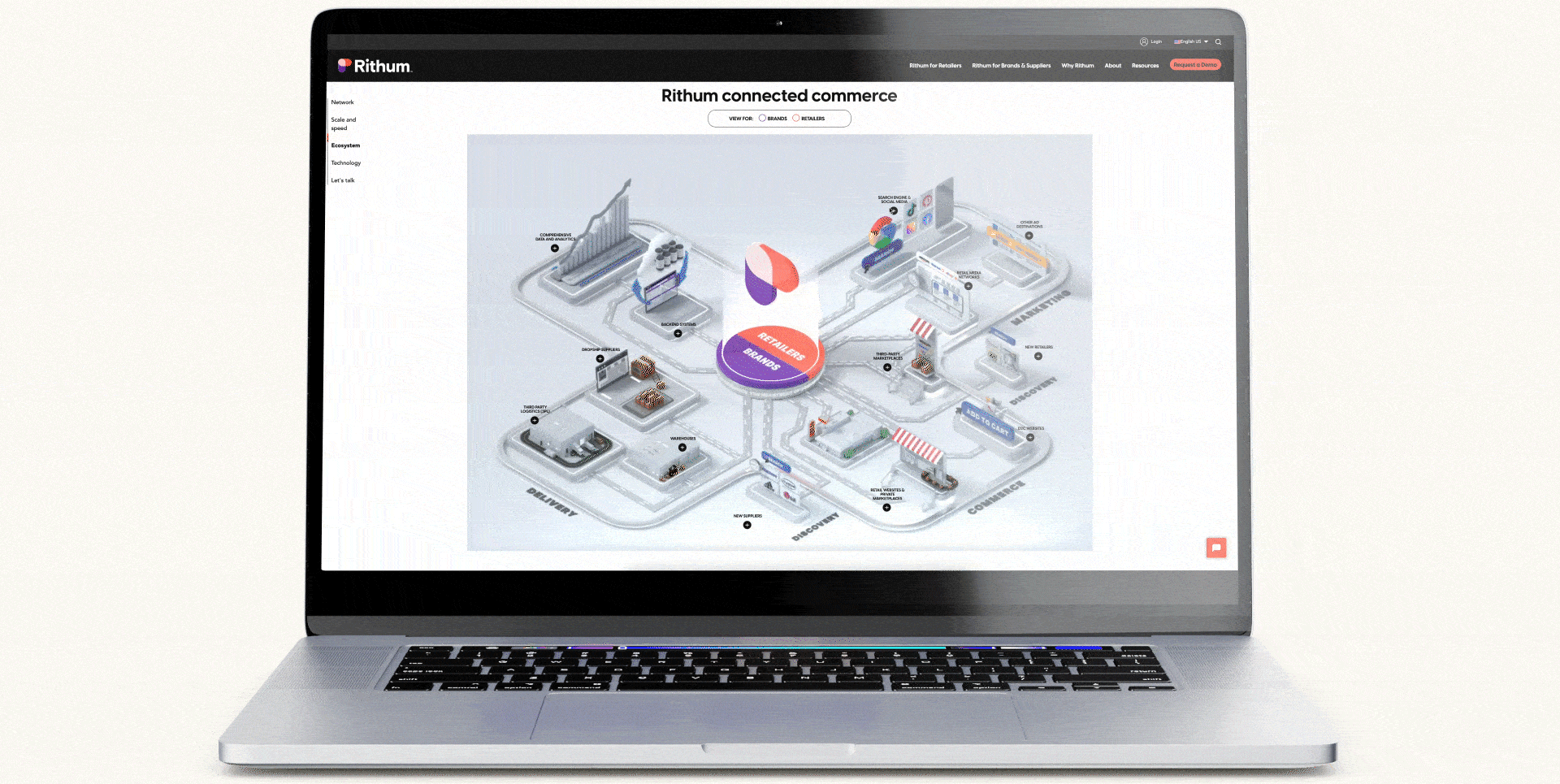
Key Tactics for High-Performance SaaS Content Campaigns
1. Customer-Centric Content Strategy
Your SaaS customers have different needs depending on where they are in their journey, and your content should reflect that. A strategic content marketing plan focuses on the following stages:
- Awareness: Attract potential customers with educational content that highlights industry challenges and trends. Think of blog posts, infographics, and whitepapers that position your brand as a thought leader.
- Consideration: Offer detailed comparisons, case studies, and solution-specific content to help users evaluate your product against competitors.
- Decision: Showcase product demos, free trials, and testimonials that reinforce the value of your SaaS solution and encourage sign-ups.
At Bluetext, we prioritize creating targeted, customer-centric content that speaks directly to each stage of the buyer’s journey—whether the goal is driving product sign-ups or nurturing current users.
2. Maximizing SEO for SaaS
SEO is a cornerstone of any SaaS content marketing strategy. High-intent, long-tail keywords that address specific problems your software solves are essential for capturing qualified traffic. But it’s not just about traffic volume; it’s about attracting the right audience.
Our team at Bluetext uses data-driven SEO strategies that combine technical optimization with high-quality, informative content. For SaaS companies, how-to guides, feature-focused blog posts, and use-case articles are particularly effective in driving organic traffic. These types of content not only rank well but also educate users and showcase your product’s capabilities.
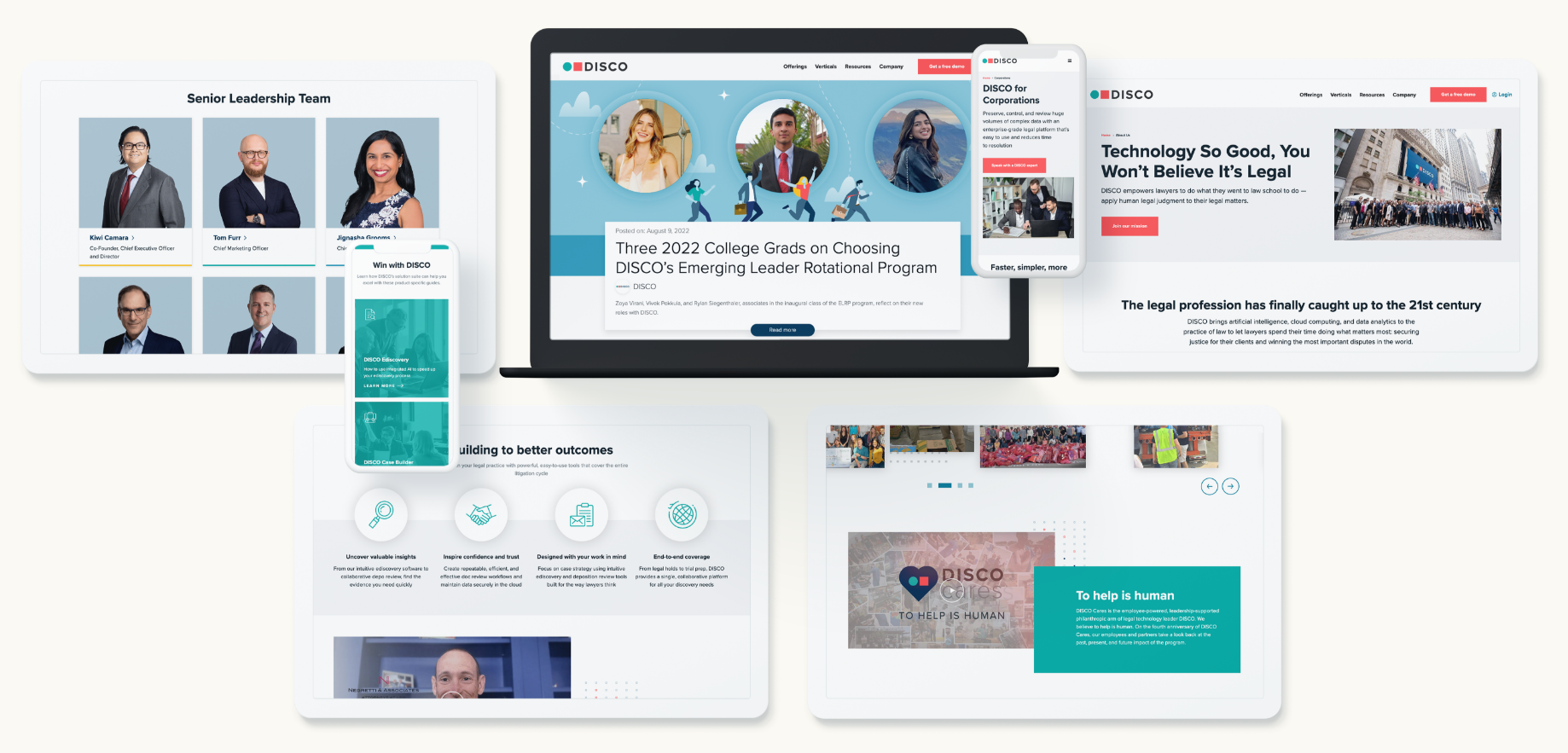
3. Product-Led Content
SaaS users need more than just promises—they need to see how your product works and how it can solve their problems. That’s where product-led content comes in. From in-depth feature breakdowns to video tutorials, product-led content helps users understand how to extract maximum value from your software.
At Bluetext, we focus on creating product-centric content that empowers users to make informed decisions. This approach ensures that potential customers feel confident adopting your SaaS solution, while existing users stay engaged and continue to explore more features.
4. Building Credibility with Case Studies & User Stories
One of the most effective ways to build trust and credibility for your SaaS product is through the success of your customers. Case studies and user stories highlight real-world applications of your software and provide social proof that potential customers are looking for.
Whether it’s a Fortune 500 company or an emerging startup, the team at Bluetext knows how to craft compelling case studies that showcase measurable results. These narratives help potential customers see how your product fits into their own success story, boosting conversions and driving deeper engagement.
Distributing Content Effectively
Creating high-quality content is just one piece of the puzzle. For SaaS companies, how you distribute and amplify that content can make all the difference. At Bluetext, we build multi-channel distribution strategies to ensure content reaches your audience in the right place, at the right time.
1. Email Marketing for User Engagement
Email remains one of the most effective tools for SaaS marketers to nurture leads and retain customers. Onboarding emails, drip campaigns, and product update newsletters are all critical touchpoints to keep users engaged. Bluetext specializes in creating personalized email marketing strategies that ensure your users get the content they need when they need it.
2. Social Media Amplification
Social media is another powerful channel for SaaS companies to share content and engage users. Our team leverages platforms like LinkedIn, Twitter, and Facebook to promote blog posts, webinars, and case studies to targeted audiences. Whether it’s through organic posts or paid campaigns, we ensure your content is reaching decision-makers and influencers in your industry.
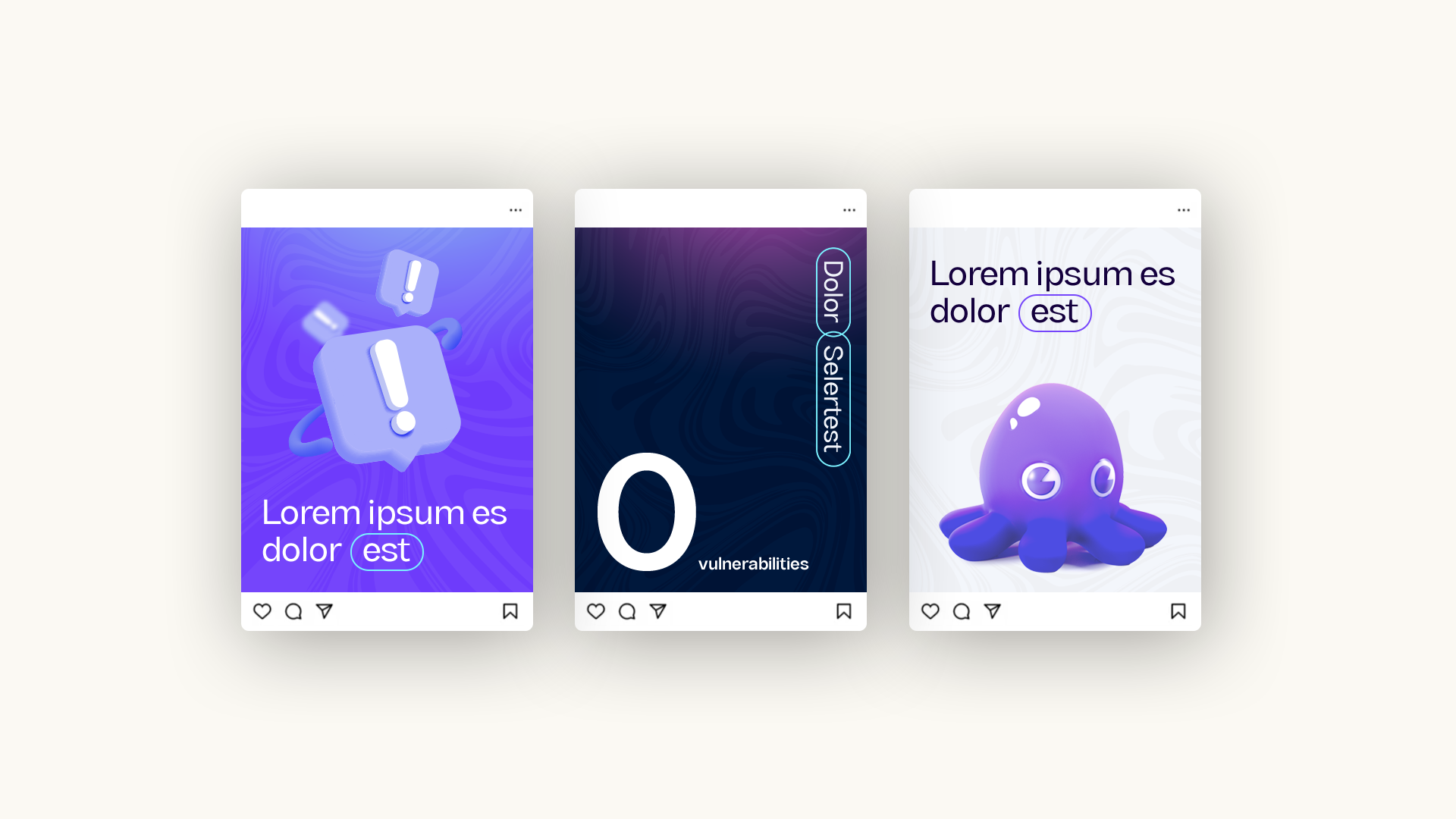
3. Partnerships and Co-Marketing
Expanding your reach through strategic partnerships is another effective way to grow your audience. At Bluetext, we help SaaS brands collaborate with complementary companies or thought leaders to share content and co-market campaigns. These partnerships not only increase brand visibility but also build valuable backlinks that improve SEO.
Measuring Success and Optimizing Campaigns
Content marketing isn’t static—it’s an ongoing process of analysis and refinement. For SaaS companies, success is measured by more than just clicks and traffic. At Bluetext, we use key performance indicators (KPIs) like content-driven conversions, churn reduction, and user engagement to track the success of our campaigns.
Our team continuously optimizes campaigns based on performance data, employing A/B testing for headlines, call-to-actions, and content formats to ensure that your content is always working toward its full potential.
Conclusion
High-performance content marketing for SaaS products requires a deep understanding of your customers, a tailored content strategy, and a robust distribution plan. At Bluetext, we’ve helped SaaS brands craft content campaigns that drive adoption, boost engagement, and foster long-term customer retention. By using these advanced tactics, you can turn your content into a powerful engine for SaaS growth.
Ready to elevate your content marketing strategy? Contact Bluetext today to see how we can help you drive SaaS adoption and retention through data-driven, high-performance content campaigns.
In today’s competitive marketplace, customer loyalty is more valuable—and harder to earn—than ever before. Consumers have endless options at their fingertips, and brands must go above and beyond to stand out. One powerful way to secure long-term customer loyalty is through personalized rewards programs. These programs not only incentivize repeat business but also strengthen the emotional connection between the brand and the customer by making every interaction feel more meaningful.
But what does it take to design and implement a personalized rewards program that keeps customers coming back? Let’s explore the key elements of an effective, customer-centric loyalty strategy.
The Importance of Personalization in Loyalty Programs
Traditional rewards programs that offer generic incentives—such as blanket discounts or point systems—are quickly losing their appeal. Today’s customers expect more personalized, relevant experiences. Personalized rewards programs tailor benefits and incentives to individual preferences and behaviors, making customers feel valued and understood by the brand.
When done right, personalized programs can significantly boost customer retention, increase lifetime value, and enhance brand loyalty by creating unique, one-on-one relationships with customers. Instead of feeling like just another number, customers feel like they’re part of an exclusive club, which strengthens their emotional attachment to the brand.
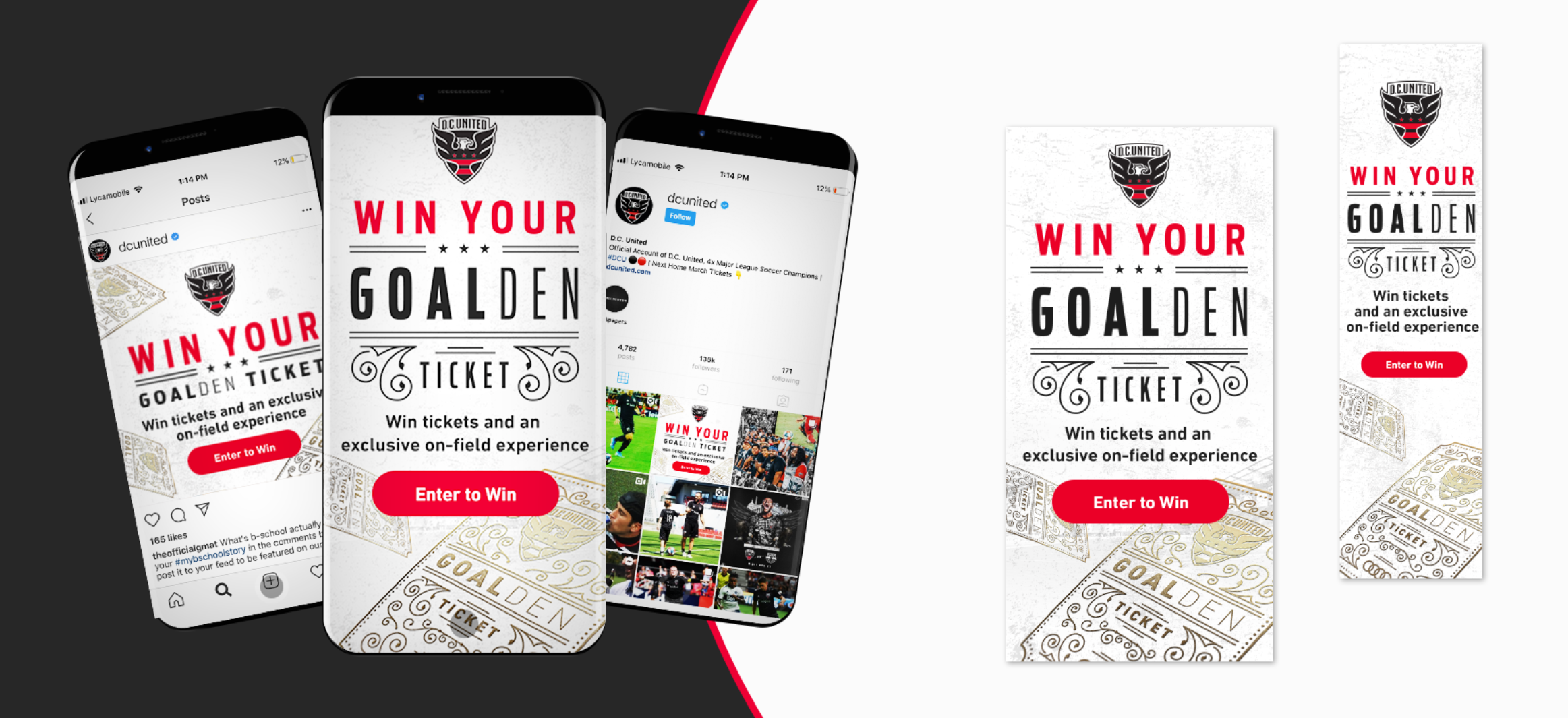
Key Elements of an Effective Personalized Rewards Program
Designing a successful personalized rewards program requires a careful balance of data, creativity, and strategy. Here’s how you can get started:
1. Understand Your Customers’ Preferences
Personalization starts with a deep understanding of your customers. The more data you can gather about their behaviors, preferences, and purchasing habits, the more tailored and relevant your rewards can be. Leverage data analytics to track what products or services each customer is most interested in, their frequency of interaction, and any other insights that can inform personalized offerings.
For instance, if you notice a customer frequently purchases specific items, offering rewards related to those products—or even personalized recommendations—will feel much more relevant than a generic discount on unrelated merchandise.
2. Segment and Customize Rewards
Not all customers are the same, so your rewards shouldn’t be either. Implement customer segmentation to categorize users into distinct groups based on behaviors, preferences, or purchasing history. Then, create customized rewards that appeal to each group.
For example, loyal customers who consistently spend above a certain threshold could be offered exclusive VIP rewards like early access to new products or events. On the other hand, customers who haven’t engaged recently might receive personalized offers to reignite their interest, such as discounts on products they’ve shown interest in previously.
3. Offer Flexible Redemption Options
One common frustration customers have with rewards programs is the rigidity of redemption options. To maximize engagement, offer flexibility in how and when customers can use their rewards. Personalized offers, such as time-limited discounts on products they love or points they can use across a variety of categories, give customers more freedom to choose the rewards that matter most to them.
This flexibility makes your program more appealing and gives customers more reasons to engage with your brand regularly.
4. Incorporate Gamification
Gamification is a powerful way to keep customers engaged with your loyalty program. By adding an element of fun and competition, you can motivate customers to earn more rewards. Personalization can take this further by tailoring the gamified experience to each user’s preferences.
For instance, creating challenges or missions that align with a customer’s interests (e.g., completing a series of purchases in a product category they favor) can make the experience more enjoyable and encourage continued participation.
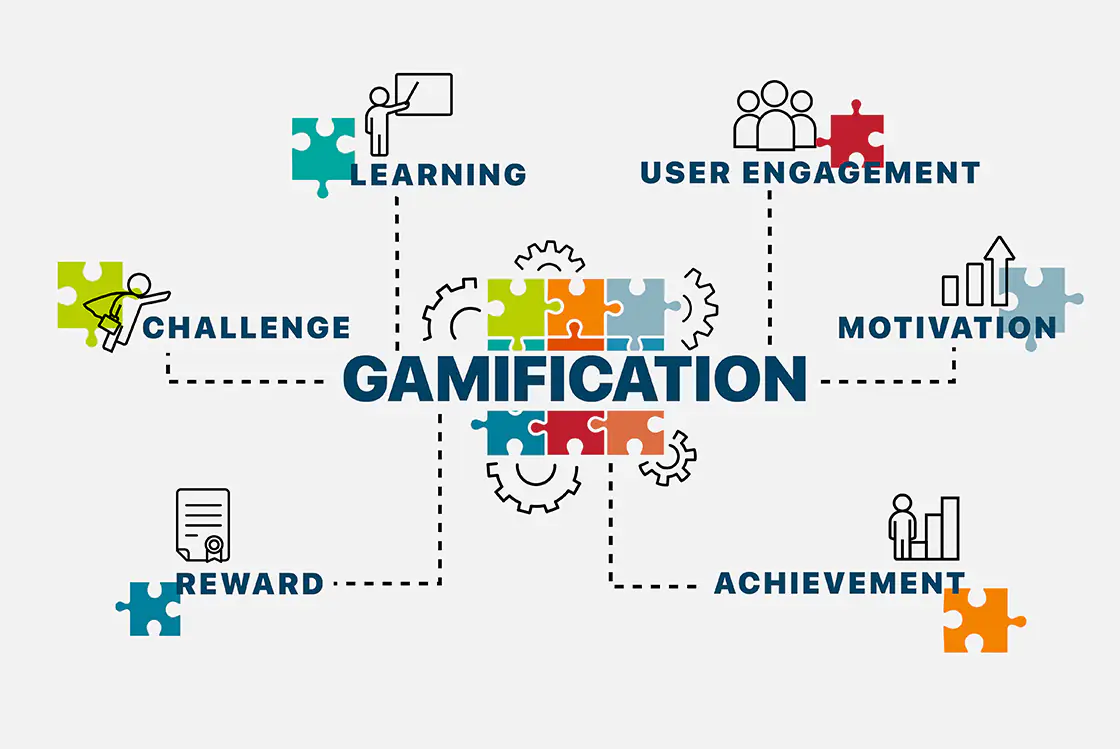
The Benefits of a Well-Designed Personalized Rewards Program
When customers feel recognized and rewarded in a meaningful way, it fosters a strong emotional connection with your brand. This connection translates into tangible business benefits, including:
- Increased Customer Retention: Personalized rewards programs keep customers engaged and incentivize repeat purchases, reducing churn and increasing retention over time.
- Higher Lifetime Value: Engaged, loyal customers tend to spend more. Offering personalized rewards based on purchasing habits encourages customers to keep interacting with your brand, resulting in a higher lifetime value.
- Word-of-Mouth Referrals: Customers who feel special and valued are more likely to recommend your brand to others. Personalized loyalty programs help create brand advocates who spread the word, driving new customer acquisition through referrals.
Implementing Your Own Personalized Rewards Program
Implementing a personalized rewards program may seem complex, but with the right tools and strategy, it can transform customer engagement and brand loyalty. Start by integrating data-driven insights to understand your audience, then build a rewards system that feels personal and relevant to each customer.
At Bluetext, we specialize in helping brands create loyalty programs that drive customer retention and build emotional connections. Whether you’re looking to launch a new program or refine an existing one, we can help you design and implement a personalized rewards strategy that delivers results.
Conclusion
In an era where customer loyalty is becoming harder to earn, personalized rewards programs offer a unique way to build long-lasting relationships with your audience. By offering relevant, tailored incentives that speak directly to individual customers, you not only increase retention but also foster a sense of belonging and brand affinity.
If you’re ready to take your customer loyalty strategy to the next level, Bluetext can guide you in designing and launching a personalized rewards program that enhances your brand’s connection with its customers. Contact us today to learn more!
As the gaming industry continues to grow, it’s becoming one of the most promising avenues for brand exposure. In-game advertising, once a niche strategy, has evolved into a powerful tool for marketers looking to reach highly engaged, diverse audiences. At Bluetext, we’ve seen first-hand how brands can capitalize on this trend to build awareness and connect with consumers in a unique, immersive environment. Here’s a closer look at in-game advertising, its effectiveness, and how brands can tap into the gaming market.
The Rise of In-Game Advertising
The gaming industry now rivals the film and music industries in terms of revenue, with billions of players globally. This makes it an appealing space for advertisers. Gamers spend hours immersed in virtual worlds, offering brands the chance to engage audiences where they are most attentive. The rise of mobile gaming, eSports, and virtual reality (VR) has only expanded these opportunities, creating more diverse ad placements that can be seamlessly integrated into gameplay.
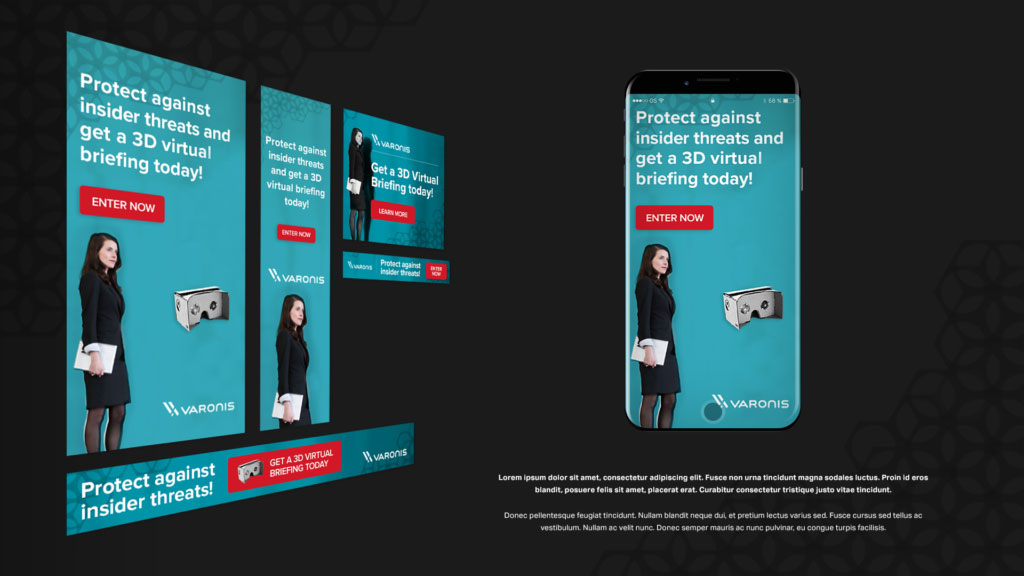
Types of In-Game Advertising
- Static In-Game Ads
These are non-interactive advertisements that are built directly into the game environment. Think of billboards, posters, or branded elements within a game’s virtual world. These ads are often baked into the game’s design, allowing them to blend naturally without interrupting gameplay. Sports and racing games, for example, frequently incorporate real-life ads into stadiums or on vehicles. - Dynamic In-Game Ads
Unlike static ads, dynamic in-game ads are flexible and can be updated in real-time. This allows brands to change messaging or switch out ads based on factors like region, time of day, or player demographics. These ads are typically served via programmatic platforms, making it easy for marketers to optimize performance throughout a campaign. - Advergaming
Some brands take it a step further by creating their own custom games—known as advergames. These games are designed specifically around a brand’s products or services. While this requires more investment, it can result in deeper engagement, as players interact with branded content for extended periods. - Rewarded Ads
A popular option in mobile games, rewarded ads offer players in-game incentives—like extra lives or bonus points—in exchange for watching an ad. This ad format benefits both players and advertisers: players get rewards, and brands get guaranteed views. It’s a non-intrusive way to serve ads, as players voluntarily opt-in, creating a more positive experience. - In-Game Product Placement
Product placement is common in TV and movies, but it’s also gaining traction in the gaming world. This method involves placing real-world products or brand elements directly into gameplay. A notable example includes branded cars in racing games or having a well-known soft drink appear as an interactive item. This subtle form of advertising can make brands feel more integrated into the gaming experience.
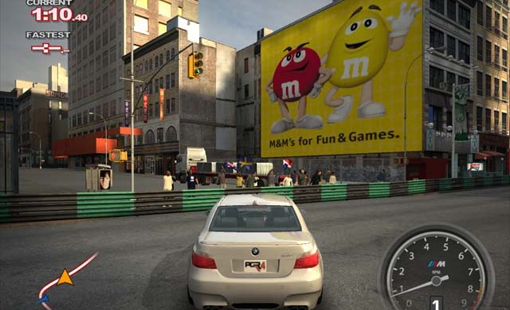
Effectiveness of In-Game Advertising
In-game advertising offers brands several key advantages. For one, gamers are deeply engaged with the content they’re playing, meaning ads placed in these environments are more likely to be noticed and remembered. Studies have shown that in-game ads often lead to higher brand recall and positive brand associations. Moreover, the flexibility of dynamic ads allows for hyper-targeted messaging, ensuring that brands are reaching the right audience at the right time.
Additionally, in-game ads are non-intrusive compared to other digital ads. Since they are part of the gaming environment, they don’t disrupt the user experience. This makes them more palatable to audiences who are increasingly resistant to traditional ads like banners or pre-roll videos.
How Brands Can Tap Into the Gaming Market
To effectively tap into the gaming world, brands need to understand the unique dynamics of this community. Authenticity is key—gamers can quickly spot inauthentic or forced marketing attempts. Brands that take the time to learn about gaming culture and integrate their ads in a way that adds value to the experience are more likely to see success.
Additionally, brands should consider partnering with popular game developers or streamers to create custom content or sponsor events. Influencer marketing in gaming has become a powerful way to connect with large, engaged audiences. Partnering with well-known gaming influencers or streamers can help boost credibility and trust among gamers.
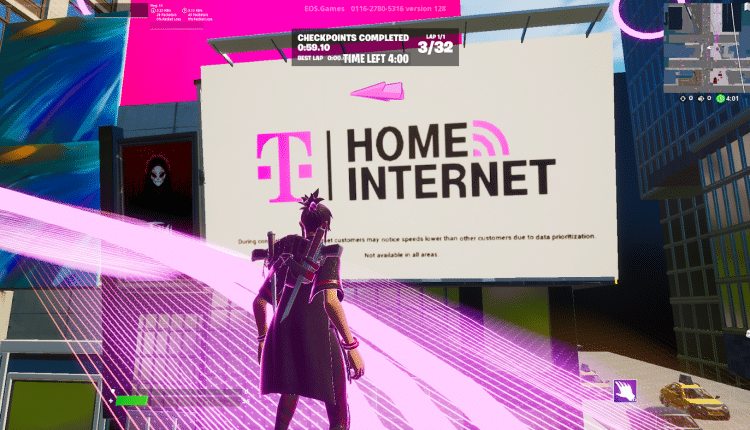
In-Game Advertising: A Powerful Marketing Strategy
In-game advertising is no longer just a novel concept—it’s a powerful marketing strategy that can help brands connect with diverse, engaged audiences in a way that feels natural and engaging. At Bluetext, we specialize in helping brands navigate the gaming landscape, leveraging data-driven insights and creative ad placements to build lasting connections with gamers. Ready to level up your advertising strategy? Let’s talk about how in-game advertising can work for your brand.
Launching a new product is an exciting milestone for any company, but it requires a well-thought-out strategy to ensure success. In today’s digital world, reaching your target audience across multiple touchpoints is crucial for standing out in a crowded market. At Bluetext, we understand that a multi-channel go-to-market (GTM) strategy is the key to executing a seamless product launch. Here’s how to plan and execute a successful GTM campaign using multiple channels.
1. Define Clear Goals and Objectives
Before diving into tactics, it’s essential to identify what you want to achieve with your product launch. Are you aiming for brand awareness, lead generation, or increasing market share? Setting clear objectives helps guide every aspect of your campaign, ensuring that each channel works towards a unified goal.
2. Know Your Audience
Understanding your audience’s behaviors, pain points, and preferences allows you to tailor messaging across channels. Build detailed buyer personas to uncover which platforms—social media, email, paid search, or industry publications—will resonate most. A thorough audience analysis ensures you spend time and budget on channels that maximize impact.
3. Choose the Right Channels
Not every platform is suitable for every product. Choose your marketing mix wisely. For example, social media is excellent for creating buzz, while email marketing can deliver personalized messaging. Paid media, such as PPC and programmatic ads, can help quickly build visibility, while content marketing positions your brand as an authority. At Bluetext, we often recommend a mix of digital and traditional channels to capture your audience at every stage of the buying cycle.
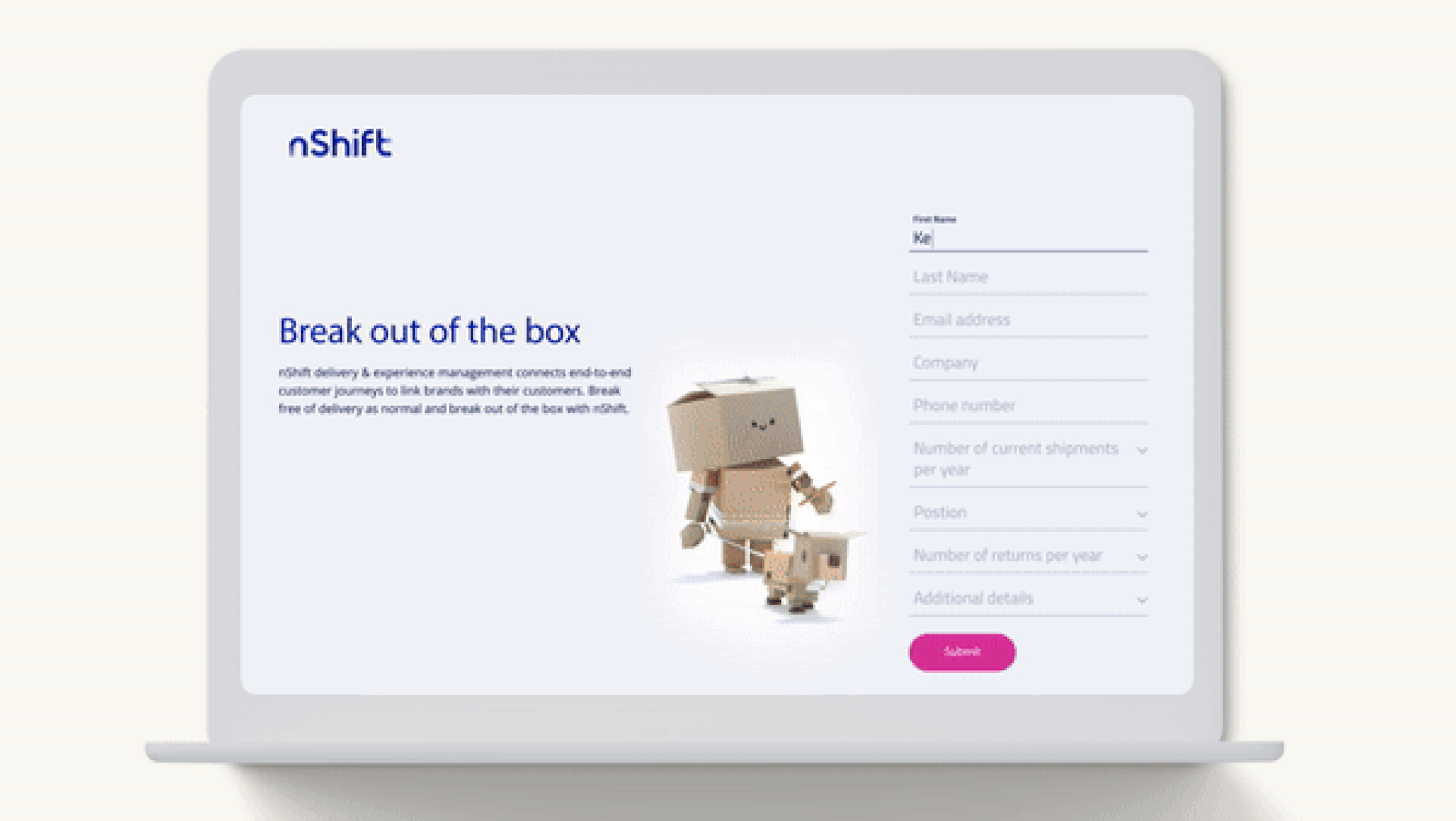
4. Craft Consistent Messaging
A multi-channel approach doesn’t mean you have to reinvent the wheel for every platform. Instead, create a core message that can be adapted to fit the tone and style of each channel. Consistent messaging ensures brand cohesion, while tailoring the content for each platform maximizes relevance.
5. Leverage Data and Analytics
Real-time data is a vital component of a successful multi-channel GTM strategy. By tracking the performance of each channel, you can quickly pivot if certain tactics aren’t delivering results. Tools like Google Analytics, marketing automation platforms, and social listening tools allow you to refine your campaigns as they run.
6. Align Sales and Marketing Teams
For a product launch to succeed, marketing and sales teams must work in harmony. Ensuring that both teams are aligned on messaging, goals, and KPIs helps guarantee a seamless transition from awareness to conversion. Regular communication between departments is key to resolving any potential gaps in the customer journey.
7. Prepare for Post-Launch
The work doesn’t end after the initial product launch. To maintain momentum, it’s important to nurture leads generated from your launch. Consider developing retargeting campaigns, post-launch content, and ongoing customer engagement strategies to sustain interest and drive conversions long after your initial GTM push.
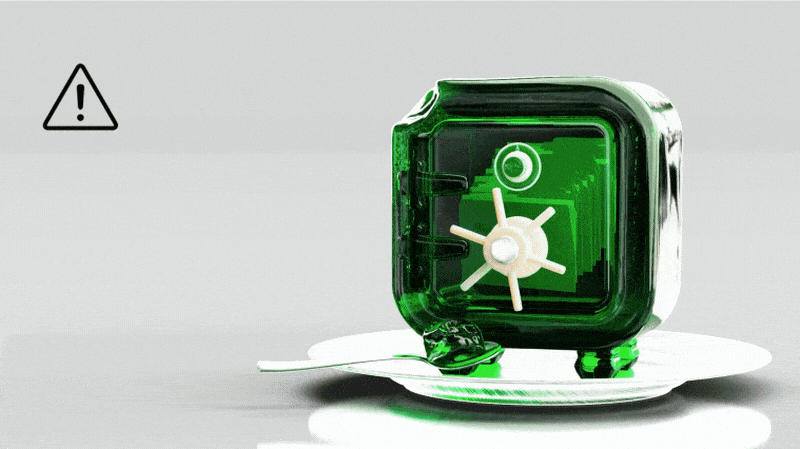
Launch Your Next Product Effectively
A successful product launch requires more than a single channel or touchpoint. A well-executed multi-channel go-to-market strategy ensures that your brand is positioned in front of the right audiences at the right time, across various platforms. At Bluetext, we specialize in developing holistic, data-driven GTM strategies that not only create buzz but also drive long-term business results. Ready to launch your next big product? Let’s talk.